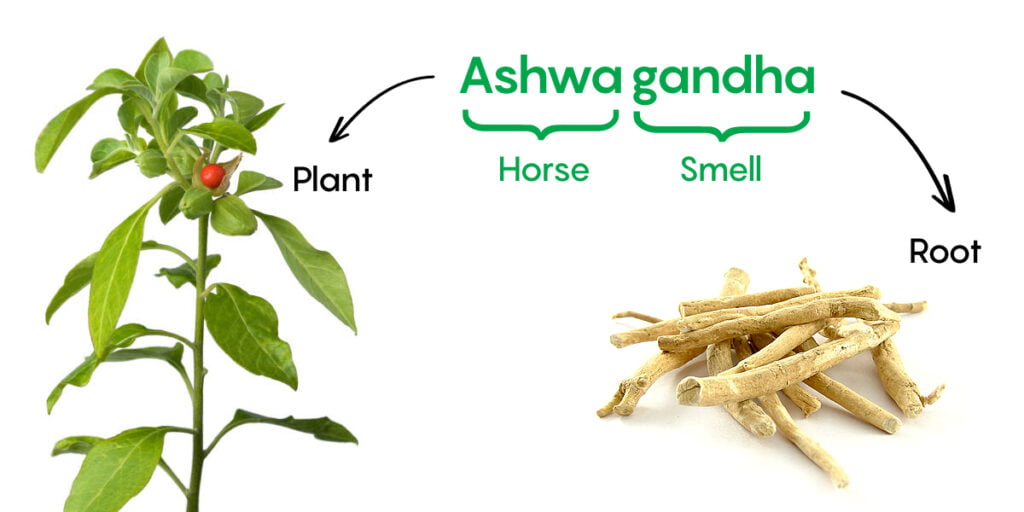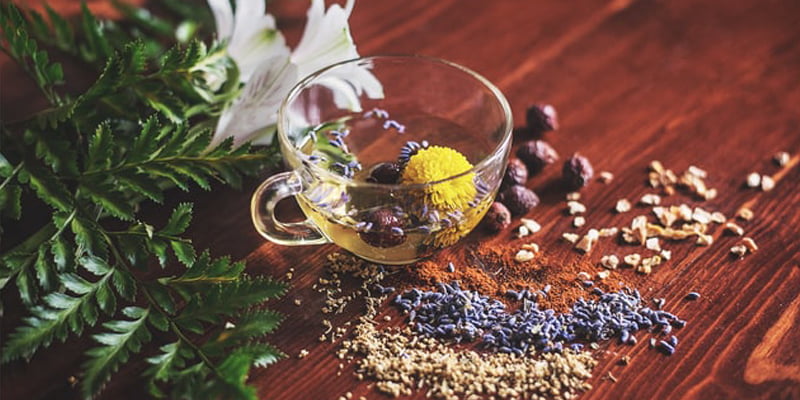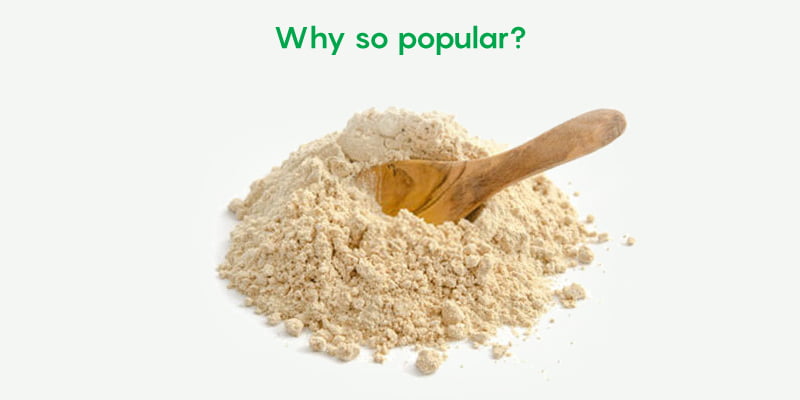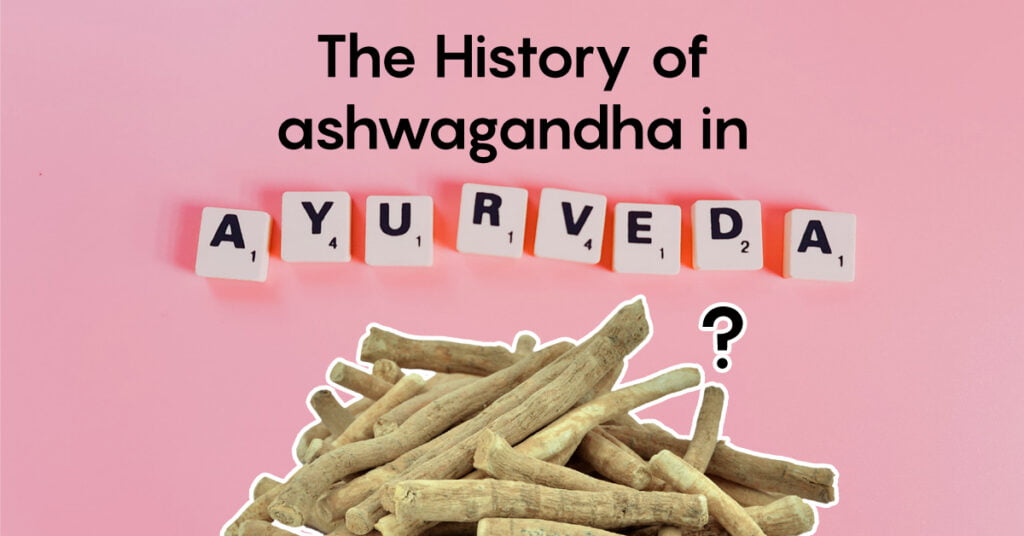Ashwagandha has a long and diverse history. There has been a significant and high position for ashwagandha in Ayurveda. The advantages and use of ashwagandha repeatedly and is managed well in Vedas. Let’s dive into the history of ashwagandha in Ayurveda.
Overview of Ashwagandha
Ashwagandha is basically a small perennial herb whose roots are harvested mainly in winters.
“Ashwagandha” is a Sanskrit word for “scent of the horse,” which refers to the herb’s heady fragrance and its ability to grow strength.
Its botanical name is Withania somnifera, and it is also acknowledged via way of means of numerous different names, including “Indian ginseng” and “wintry weather cherry.”
Ashwagandha is used as a family treatment with the aid of using Indians It grows three-to-five toes tall, especially on wasteland, however is cultivated extensively because of the complete plant; maximum generally the roots and leaves are used medicinally.
Ashwagandha’s roots are derived from Withania somnifera, a low-growing evergreen shrub native to India and Southeast Asia.
History and importance of ashwagandha in Ayurveda
The history of ashwagandha in Ayurveda can be traced back to almost 6000 BC. Ashwagandha is recognized as a powerful herb.
From where did the name “ashwagandha” come from?
The name ‘ashwagandha’ is a combination of the two Sanskrit words, ‘ashva’, which means horse, and ‘gandha’ which refers to smell, which jointly conveys that the roots which have a smell of horse.

Other names of ashwagandha
There are different names of ashwagandha in different languages in India
| Language | Name |
| English | Winter cherry, Indian ginseng |
| Sanskrit | Ashvagandha (Horse smelling) |
| Hindi | Asgandh |
| Urdu | Asganda nagori |
| Punjabi | Aksan, Asgand |
| Haryanavi | Aksin |
| Gujarati | Ghodaakun, Asuth |
| Rajasthani | Sarvgandha |
| Marathi | Askandha, Kanchuki |
| Konkani | Fatarfoda |
| Bengali | Ashvaganda |
| Oriya | Asugandha |
| Assamese | Asgandhisrol |
| Kannada | Amangura, Sogadeberu |
| Malayalam | Amukkiram, Pevetti |
| Tamil | Amkulan-kalang, Achuvagandhi |
| Telugu | Penneru gaddalu |
Ashwagandha and Ayurveda
Ashwagandha’s records are largely intertwined with the records of Ayurveda, as it’s far taken into consideration one of the maximum vital Ayurvedic herbs
It is said that people who eat ashwagandha have the energy of the horse and also ashwagandha is given to kids and teenagers for boosting the energy.
For the last 6000 years, Ashwagandha is used as a Rasayana. Rasayana simply means nutrition at all levels from micro to macrocellular.
Ashwagandha has been utilized in conventional remedy structures which include Ayurveda, Unani, Siddha, Sowa Rigpa, homeopathy, and different peoples remedy models.
It is as vintage as Ayurveda itself, which is thought to be 5,000 years vintage. Ayurvedic specialists say that specified records approximately ashwagandha is found in all of the 3 generations of Ayurvedic texts.
Although the idea is to be beneficial as a medicinal herb in Ayurveda and offered in many nations as a nutritional supplement, there may be inadequate medical proof that it is miles secure or powerful for treating any disease.
Ayurvedic specialists declare that the earliest point out of the herb is observed withinside the Charaka Samhita, a foundational scientific textual content written with the aid of using Ayurvedic practitioner Charaka, who lived among 2 hundred B.C. and 2 hundred A.D.
“In the book, ashwagandha capabilities as a component in numerous drug formulations for remedy of skin, respiratory, rheumatic, pediatric (the branch of medical science which deals with the health and medicinal care of infants) and debilitating conditions,” says Dr. Jithesh MK, doctor at Arya Vaidya Sala.
The dried root and the entire plant are used withinside the conventional medicinal drug structures of Ayurveda, Siddha, Sowa-Rigpa (Amchi), and Unani, in addition to in Indian people medicinal drugs.
The substances of trade are received from each cultivated and wild-accumulated source, especially in India. Although ashwagandha is now cultivated on farms outdoor of its local habitat, the unprocessed dried roots are getting used as additives of nutritional complement merchandise and herbal fitness merchandise.
Ashwagandha, or Withania somnifera, is an herb local to Asia and Africa.
Also called “Indian ginseng,” it is been utilized in conventional Indian Ayurvedic medicinal drugs for hundreds of years to ease ache and inflammation, deal with insomnia, and enhance nutrition, in conjunction with different conditions.
The roots of ashwagandha are frequently dried and ground, then given as a powder blended with ghee, honey, and milk as Ashwagandha can frequently have a sour taste.
This heat beverage is frequently eaten up earlier than bedtime.
Withinside the Indian structures of medicinal drugs, the dried roots can be subjected to sure conventional fermentation, purification, or detoxing approaches previous to healing use.
Ashwagandha’s cultivation region
The species is extensively allotted withinside the north-western Indian states of Madhya Pradesh, Gujarat, Maharashtra, Rajasthan, Uttar Pradesh, and the Punjab plains extending to the mountainous areas of Himachal Pradesh and Jammu. It is mainly cultivated in elements of Madhya Pradesh, Neemuch-Mandsaur is one of the major Ashwagandha producing regions in India.
It is one of the nice nerving tonics of Ayurveda, the maximum historic device of Medical Sciences.
Ashwagandha in Vedas
Ashwagandha has a long and diverse history. In the Vedas, one of the earliest holy texts in Hinduism, Hindu saints recorded their knowledge of healing practices.
The Vedas contain important information about the plants and their benefits during that period of time.
The very first history of ashwagandha in Ayurveda was mentioned in Rig Veda, which was composed together around 6000 BC.
The advantage and use of ashwagandha are mentioned repeatedly and are managed well in Vedas.
There has been a significant and exalted position for ashwagandha in Ayurveda, which describes it as a multipurpose health tonic. Today, ashwagandha can be purchased as an extract and is used to treat more than one ailment.
Ashwagandha is an evergreen shrub that grows in the middle east, in parts of India, and in Africa. Ashwagandha is also known as the winter cherry or Indian ginseng.

What does Ayurveda mean?
The term Ayurveda is made up of two words ‘Ayur’ which means life and Veda means ‘knowledge’, the term is cooperatively called knowledge of longevity and life!
An alternative medicine system that emphasizes diet, herbal remedies, exercise, meditation, breathing, and physical therapy to promote health and well-being in the body-mind, and spirit.
It is one of the maximum vital herb of Ayurveda (the conventional machine of medication in India) used for millennia as a Rasayana for its extensive-ranging fitness benefits. Rasayana is defined as a natural or metal training that promotes a younger country of bodily and intellectual fitness and expands happiness.
These forms of treatments are given to small youngsters as tonics, and also are taken with the aid of using the middle-elderly and aged to boom longevity. Among the ayurvedic Rasayana herbs, Ashwagandha holds the maximum distinguished place.
Ayurvedic uses of ashwagandha
By supporting a human’s ability to cope with stress, adaptogens conserve energy. Ashwagandha rejuvenates and tones the whole system, mainly the endocrine system and immune system.
Ashwagandha in Ayurveda is ranked high due to its versatility and a long list of medicinal benefits.
Ayurveda is consist of several other Vedas, one of the Veda describes ashwagandha as a health tonic, strength enhancer, and an aphrodisiac.
The concept of Ashwagandha as a tonic is based on its unique nature. Ashwagandha is also well known for boosting energy and stamina.
It also releases stress and anxiety. In other words, we can say that ashwagandha can rejuvenate you.
Ashwagandha’s records indicate that it turned into used as a memory booster in Ayurveda. Now, there are studies to reveal that ashwagandha can also add, in fact, sell mind fitness via way of means of enhancing memory.
Currently, AIST in Japan and the Indian authorities are doing full-size studies on ashwagandha’s capability withinside the remedy of cancer, pressure, sleep, and neurological disorders, and improving the first-rate of life. In 2017,
Dr. Kaul believes it is probably beneficial in enhancing sleep for aged human beings and people present process radiotherapy.

While the use of ashwagandha has definitely developed to fulfill our contemporary-day day needs, Ayurvedic medical doctors nonetheless stick to conventional formulations.
“In the classical Ayurvedic texts, the powdered root of ashwagandha become used. The everyday prescription becomes 5 to ten grams of powder with milk or different varieties of medicine.
In those instances of COVID, ashwagandha powder, pills and drugs are to be had withinside the worldwide marketplace to enhance immunity. It is likewise an essential element in such a lot of Ayurvedic anti-pressure capsules which might be being sold,” says Dr. Gopakumar.
The cause in the back of that is due to ashwagandha’s antioxidant activity, which protects nerve cells from dangerous loose radicals. Free radicals are dangerous, pretty reactive corporations of atoms that can motive harm to the cells, ensuing in memory loss and impaired mental function.
Studies have proven ashwagandha to be powerful for enhancing fashionable memory, response time, attention, and overall performance throughout tasks. Eleven additionally, ashwagandha gives neuroprotection, which can also additionally save you the onset of memory-associated disorders.
There is a hobby in the usage of ashwagandha for some of the different purposes, however, there are not sufficient dependable records to mention whether or not it is probably helpful.
Ashwagandha as a medicine
Ashwagandha has a huge form of conventional makes use of, a lot of that have now no longer been examined scientifically. Ashwagandha is a treatment for –
“adenopathy, anthrax, arthritis, asthma, bronchitis, cancer, candida, cold, cough, cystitis, debility, diarrhea, dropsy, dyspepsia, erysipelas, fever, furuncle, gynecopathy, hiccups, piles, proctitis, psoriasis, rheumatism, ringworm, scabies, senility, smallpox, sores, syphilis, tuberculosis, tumor, typhoid, uteruses, hypertension, inflammation, lumbago, marasmus, nausea, and wounds.
Additionally makes use of attributed to the plant, in standard, are the remedy of alcoholism, anemia, colds, dropsy, fever, hypertension, insomnia, lumbago, ulcers, losing in children, and elimination of obstructions in any human frame system.
Some of the documents make use of the foundation of ashwagandha consist of as a hypnotic for treating alcoholism (together with leaf); remedy for mind fog, colds, and chills, early life emaciation, emphysematous dysphonia (hard speech resulting from emphysema, with leaf), fever, glandular swelling, impotence or seminal debility; to boom breast milk; and to counteract lack of reminiscence and muscular energy, apprehensive exhaustion, rheumatic fever, rheumatic swelling, senile and standard debility, spermatorrhea, syphilis, and ulcers. In Tanzania, the foundation is used as a sexual stimulant and to sell uterine contractions.
We also are the usage of it in all styles of most cancers which include prostate and lung cancers, mainly in final stages, giving the sufferers lot of fitness benefits. We have a few instances of lung cancers who’ve refused the current remedy and recovered clinically and radiologically with our remedy of Ashwagandha.

Why ashwagandha is so popular right now?
It seems that during stressful times, you should turn to super-relaxing remedies and methods.
Ashwagandha is suitable for those who prefer herbal medicines over chemicals and it can fit into your bills perfectly fine.
Modern lifestyle is complete of pleasure Trigger. And that pressure contributes to a bodily and intellectual infection and search for approaches to sense better.
A Wholesome Lifestyle that consists of everyday exercise, an amazing diet, habitual mindfulness practice, and ok sleep, is fundamental to constructing the resilience to reply and get overpressure.
Ashwagandha is a secure medicinal herb that has been around for heaps of years and has been used for a large number of purposes. In fact, only a few aspect outcomes had been attributed to it.
If you’re in search of a nootropic that has quite a number of fitness advantages and few validated aspect outcomes, ashwagandha is probably for you.
Ashwagandha’s records span hundreds of years, at some point of which it’s been hailed as an effective herb with many healing gifts.
Today, human beings have the sources to absolutely recognize the variety of blessings this herb has to offer, specifically in terms of the cognitive-improving blessings.
Thus the above details clearly show that the history of ashwagandha in Ayurveda has a logical and clinical basis. And the history of ashwagandha in Ayurveda is very popular because of its Ayurvedic uses.
We at KRSHAK exports are empowering the Farmers and empowered by the farmers in the production of the top quality Ashwagandha Roots and Powder.
Drop a mail to us know more. Contact Us


Amazing 👌
Thank you so much!